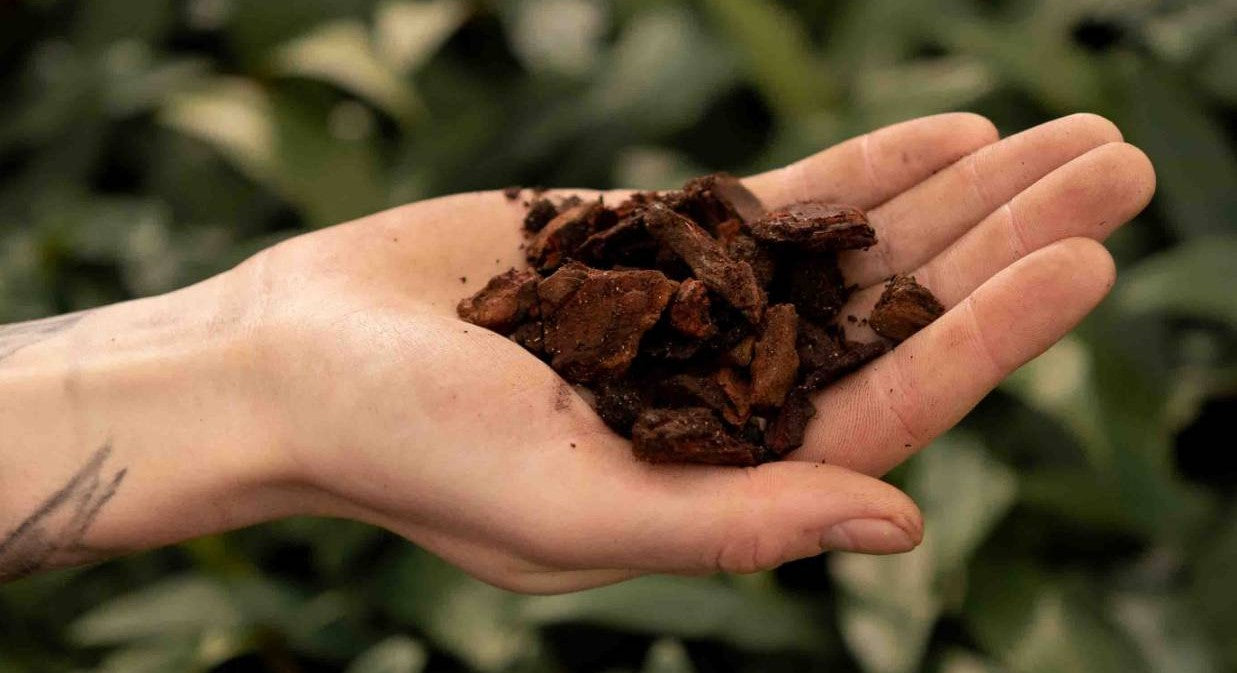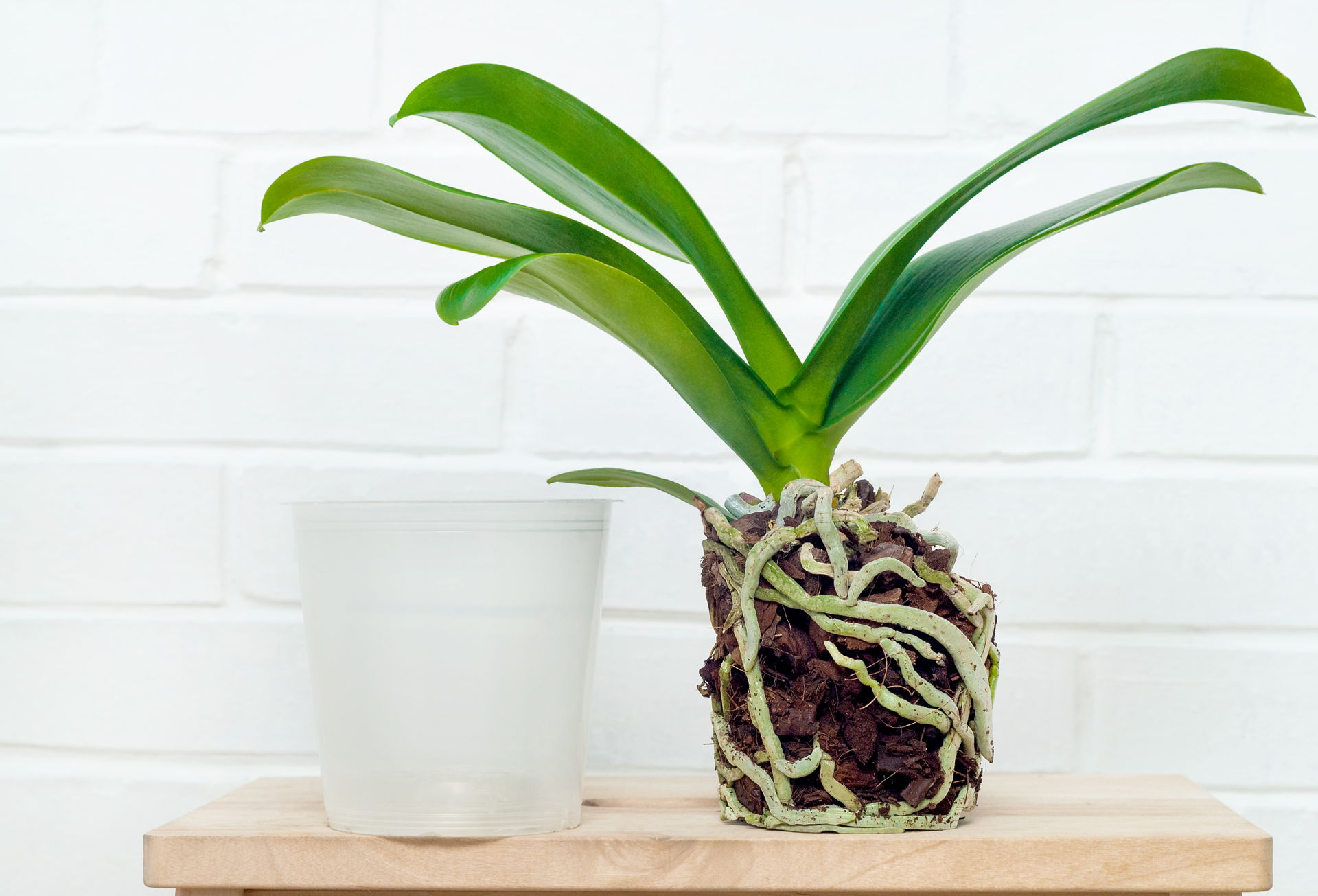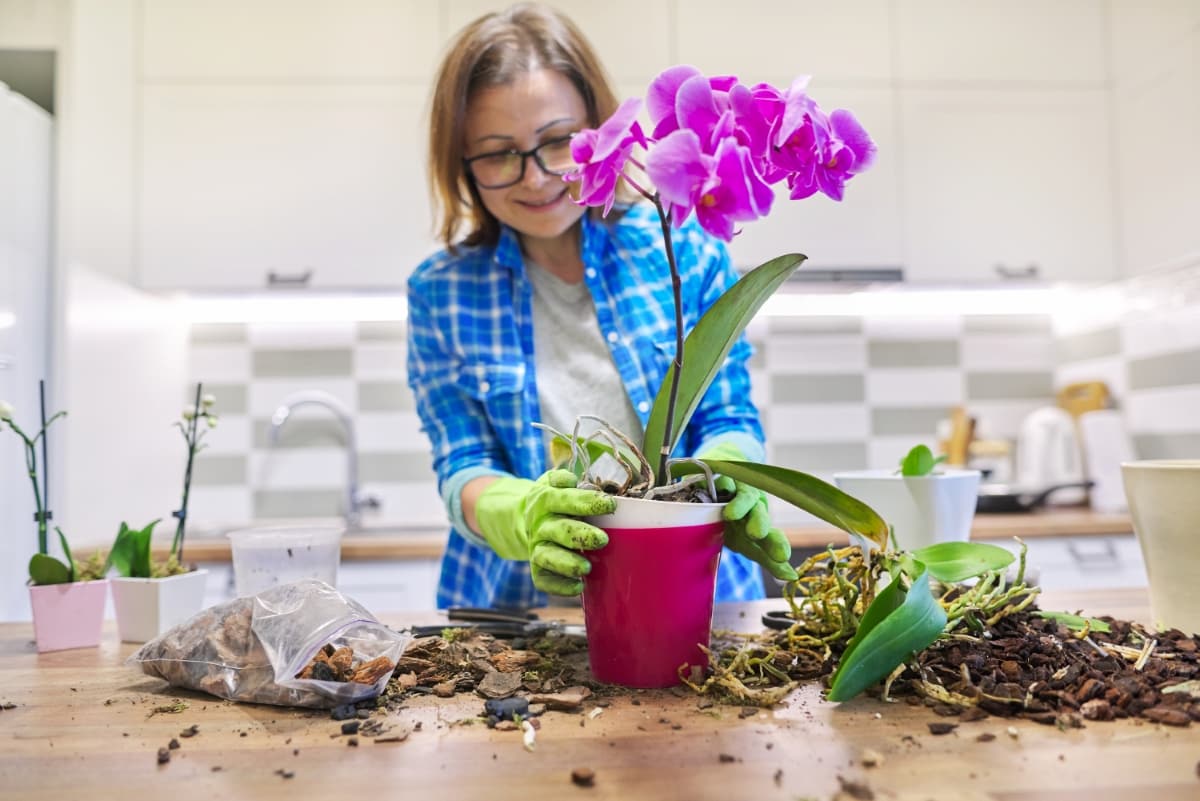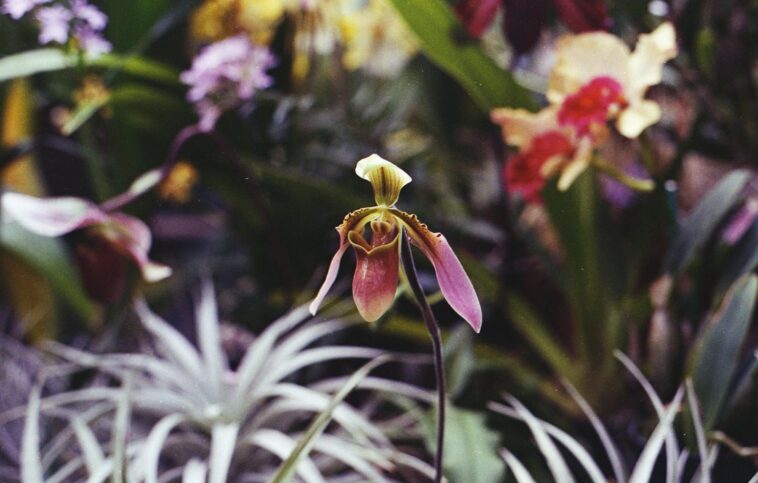Orchids are delicate and unique plants that require specific care, and one crucial element is the type of bark used for potting.
In this comprehensive guide, we will explore the various types of orchid bark, how to choose the right one for your orchids, potting techniques, watering and moisture control, as well as fertilizing and nutrient management.
Get ready to delve into the world of orchid care with expert advice and detailed information.
Types of Orchid Bark

The classification of orchid bark into different types is essential for understanding the specific requirements of orchids in terms of their growing medium. Orchid bark is available in different sizes, ranging from small to large. The size of the bark particles affects the drainage and water retention capabilities of the growing medium. Smaller bark particles provide better water retention, while larger ones offer improved drainage.
Using it as a growing medium has several pros. It provides excellent aeration for orchid roots, preventing them from becoming waterlogged and reducing the risk of root rot. It also helps to mimic the natural habitat of orchids, as many species grow on trees or rocks. Additionally, orchid bark is long-lasting, making it a cost-effective option for this flower cultivation.
However, there are also some cons to using orchid bark. It tends to break down over time, necessitating periodic replacement. Additionally, orchid bark may require frequent watering due to its fast-draining nature.
Choosing the Right Product
When selecting orchid bark, it is important to consider the specific requirements of your orchids and choose the appropriate type for their growing medium. Orchids have unique needs when it comes to their growing medium, and using the right orchid bark can contribute to their overall health and growth.
One of the benefits of using it as a growing medium is its ability to provide excellent drainage. This is crucial for orchids, as they are susceptible to root rot if their roots are constantly sitting in water. Additionally, orchid bark provides good aeration for the roots, allowing them to breathe properly.
Another benefit is that it is a soil alternative, as orchids are not typically grown in regular potting soil. It provides a stable and well-draining medium for the roots, creating an optimal environment for orchid growth.
Potting Techniques

To properly pot orchids with orchid bark, follow these effective techniques.
First, choose the right potting mix alternative for your orchid. Orchid bark is a popular choice due to its excellent drainage properties. Other options include sphagnum moss or a combination of bark and moss.
Next, consider the repotting frequency of your orchid. Most orchids require repotting every 1-2 years to refresh the potting mix and prevent root rot. Look for signs such as overcrowded roots or a decline in plant health to determine when it’s time to repot.
When potting, ensure that the orchid’s roots are placed securely in the pot and surrounded by the mix. Gently press the mix around the roots to provide stability without damaging them.
Following these techniques will help ensure the health and vitality of your orchids.
Watering and Moisture Control
Proper watering and moisture control are crucial when using orchid bark as a potting medium for your orchids. It has excellent drainage properties, allowing excess water to flow out freely.
It is important to water your orchids thoroughly but infrequently. The frequency of watering will depend on various factors such as the type of orchid, the size of the pot, and the environmental conditions. As a general rule, it is recommended to water orchids when the top inch of the bark feels dry.
Overwatering can lead to root rot and mold growth, which can be detrimental to the health of your orchids. To prevent mold, ensure that the orchid bark is completely dry before watering again. Additionally, good air circulation around the plants can also help in preventing mold formation.
Fertilizing and Nutrient Management

Fertilizing and nutrient management are essential aspects of caring for orchids grown in orchid bark. Orchids have specific nutrient requirements, and providing them with the right balance of fertilizers is crucial for their overall health and blooming.
When it comes to fertilizer schedules, it is generally recommended to apply a balanced fertilizer every two weeks during the growing season and reduce the frequency to once a month during the dormant period.
When choosing a fertilizer, you have the option of using organic or synthetic fertilizers. Organic fertilizers, such as fish emulsion or seaweed extract, provide nutrients to the orchids in a slower and more natural manner. On the other hand, synthetic fertilizers offer a more precise and immediate nutrient supply.
Both organic and synthetic fertilizers can be effective for orchids grown in orchid bark, and the choice depends on personal preference and specific needs of the plants. It is important to follow the recommended dosage instructions and avoid over-fertilizing, as this can lead to root burn and damage the orchids. Regular monitoring and adjustments to the fertilizer schedule can help ensure optimal nutrient management for your orchids.
Frequently Asked Questions
How Often Should I Repot My Orchid When Using A Bark?
When repotting orchids, the frequency depends on the growth rate and the condition of the current potting medium. Generally, it is recommended to repot every 1-2 years. However, alternative potting mediums offer different timelines, so research is crucial.
Can I Mix Different Types of Orchid Bark Together?
Mixing different types of orchid bark together can provide various benefits. By combining coarse and fine bark, you can create a well-draining yet moisture-retentive medium. This allows for better root aeration and water retention, promoting healthy growth.
Can I Reuse It After It Has Been Used in a Previous Potting?
Reusing this in potting can have pros and cons. While it may save money and resources, there are risks of contamination and nutrient depletion. It is important to sterilize the bark and assess its condition before reuse.
Is It Necessary to Soak It Before Potting My Orchid?
Soaking orchid bark before potting can have both pros and cons. It helps to remove any dust or debris, promotes hydration, and improves water retention. However, excessive soaking may lead to root rot and overhydration.
Can I Use It as a Top Dressing for My Other Houseplants?
Yes, orchid bark can be used as a top dressing for other houseplants. It provides excellent drainage and aeration, promoting healthy root growth. Additionally, it is beneficial in terrariums as it helps maintain proper moisture levels.



